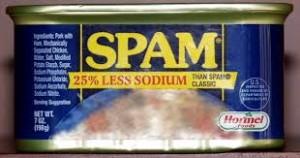7 Facts to Help Crack the Code on Food-Labels
 We’re always being told to read the labels on food products, if we want to be healthy or lose weight. The trouble is, those labels are confusing. It doesn’t help that there are two government agencies involved. The FDA oversees labels for packaged foods and seafood, and the USDA oversees labels for fresh produce, meat, poultry and dairy.
We’re always being told to read the labels on food products, if we want to be healthy or lose weight. The trouble is, those labels are confusing. It doesn’t help that there are two government agencies involved. The FDA oversees labels for packaged foods and seafood, and the USDA oversees labels for fresh produce, meat, poultry and dairy.
The FDA has proposed sweeping changes to labels to make them more understandable, but those changes might not be enough to help us always make better food choices.
There’s an excellent article “What Do Those Food-Label Terms Really Mean?” in the Tufts University Health & Nutrition Letter (June 2015). The article requires a paid subscription of $24, but you can probably access it from your local library’s Website like I did.
Here are seven facts about food labels that might help you make better choices at the grocery store.
- Calorie free and zero calories – A food must contain fewer than five calories to be labeled calorie-free or zero calories.
- Reduced sodium vs. low sodium – Reduced means 25% less sodium than the same food in a normal amount. Low sodium must have 140 mg or fewer of sodium.
- Excellent source of fiber vs. extra fiber – Excellent source must contain at least 20% of a person’s recommended daily value. Extra means the product has at least 10% more fiber than a comparable product.
- Sugar free vs. no added sugar – Sugar free must contain fewer than 0.5 grams of sugar in each serving. No added sugar can still contain sugars that occur naturally and can still be high in calories. A product labeled no high fructose corn syrup can contain any other kind of sweetener.
- Low fat or low in saturated fat – Low fat can have up to 3 grams of total fat per serving. Low in saturated fat can have no more than 1 gram of saturated fat, but there’s no limit on other fats contained in the product.
- Low calorie or light – Low calorie means the product can’t contain more than 40 calories per serving. Light means 25% fewer calories than a comparable product.
- Organic vs. natural – Organic must meet USDA requirements. Natural has no oversight, so the term natural is not defined. Organic labeling automatically ensures no GMOs.
Well, there you have it—seven things to know about food labels. Even if you took a three-credit college course on this subject, you’d probably still be confused at times when trying to compare one product to another. The best way to avoid that headache is to eat as many organic fruits and vegetables as possible and eat as few packaged foods as you can. If you’re buying foods that look like their original state, and they’re labeled organic, you can’t go too horribly wrong.
Ann Silverthorn writes about a wide variety of topics in numerous genres. She’s currently working on a biography of William E. Dimorier (1871-1951), a nearly forgotten poet and educator, who dedicated his life to the betterment of young people.
Twitter: @annsilverthorn
Instagram: ann_silverthorn




Leave a Reply